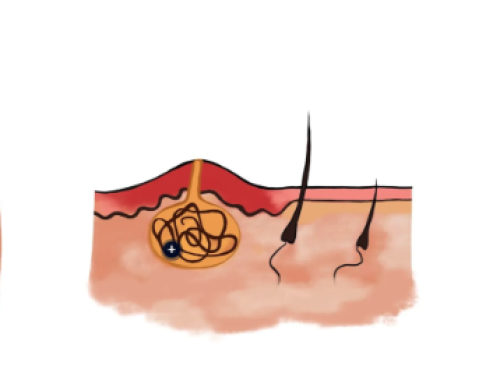
You go in for your routine colonoscopy. While there, your doctor mentions that they found some polyps.
But what exactly are polyps, and are they normal or dangerous?
Colon polyps are small growths of tissue that project from the lining of a section of the large intestine. They can vary in size and number, meaning you may have just one or you could also have several, big or small. It really depends!
About 15–40% of adults in the United States have colon polyps. However, they are most common in older adults and men. It is important to get screened because the larger the polyp is, the more likely it is or will become cancerous.
To ensure your safety and health, sometimes doctors will remove benign polyps to prevent them from developing into malignant polyps.
Is there a way to tell if you have polyps without going to the doctor?
While polyps will occasionally cause symptoms, most of the time they can only be diagnosed or seen during an exam. However, if you do experience abnormal symptoms such as blood in stool, constipation, abdominal pain, or fatigue, it may mean you have polyps in your colon. It is always best to schedule a checkup with your doctor to truly identify what is causing any abnormal symptoms you are experiencing rather than trying to identify the cause at home.
What do polyps look like and how big are they?
There is a large range of what polyps can look like. In terms of size, they can be as small as a couple of millimeters to as big as several centimeters! While they typically mimic four main growth patterns–either tubular, tubulovillous, villous, or serrated.
- Tubular – these are the most common form of polyps and have a tube-like rounded shape
- Tubulovillous – a mix of tubular and villous-shaped polyps
- Villous – these polyps have a larger, cauliflower-like shape and are more likely to be cancerous
- Serrated – these polyps have a sawtooth appearance, look like small raised bumps, and can either have a low risk or high risk of being cancerous
How are polyps removed?
They are usually removed during a colonoscopy using either a hot or cold snare polypectomy. Smaller polyps may be removed with either a hot or cold forceps biopsy.
Although you may have the polyps completely removed, there is a higher likelihood that more will develop in the future if you have had polyps in the past–another good reason to be tested or screened more frequently.
Not all polyps will turn into cancer, and it may take many years for a polyp to become cancerous. If a polyp is found early, doctors can remove it and stop colorectal cancer before it starts. Oftentimes you will not even know they are there, however, there is always the possibility of them becoming malignant or you may start to develop abnormal symptoms that affect your daily life. If this is the case, schedule a checkup with your doctor to help determine if it would be a good idea to get a colonoscopy.
Interested in scheduling an appointment with Dr. O’Connor? Get started here.




